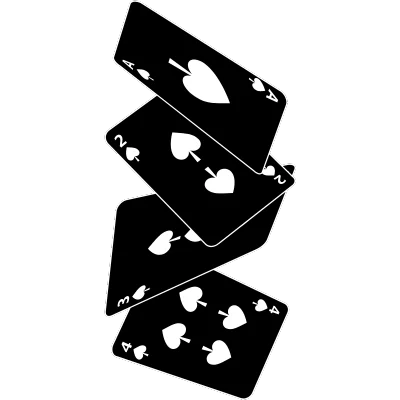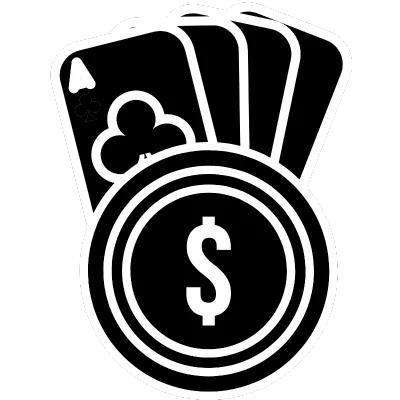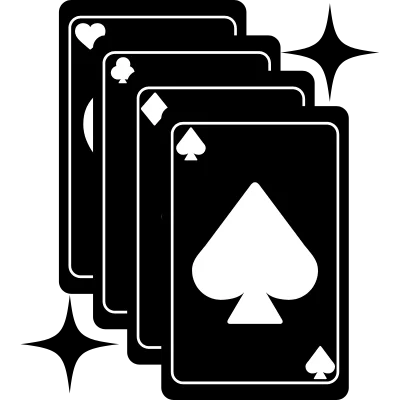The History of Poker: From the Saloon to the Internet

Poker isn’t just a game, and how dare you refer to it that way! It’s a cultural phenomenon. Did you know that poker is so popular that the World Series of Poker (WSOP) brings in players from over 100 countries—all competing for millions in prize money? This iconic game, which started out in the smoke-filled saloons of the Old Wild West, has turned into a cultural juggernaut.
Poker’s evolution from its rough-and-tumble origins to the chic, high-stakes online tournaments of today is filled with interesting twists and turns. To trace this amazing evolution, we’re going to explore just how poker changed from a way cowboys and ne’er do well’s passed the time to a respectable and sophisticated game that entertains millions around the world!
Understanding poker’s storied history is anything but a boring examination of the past—the changing of strategies, cultures, and, of course, technology have all played a part and made the game into what it is today. How did such a simple card game become a worldwide obsession? Let’s shuffle up the deck and deal!
Early Origins of Poker
Poker’s rich history includes bits and pieces picked up from ancient and regional card games—it made its way from the ancient courts of Persia to the bustling riverboats of 19th-century America via cultural exchange and adaptation.

Ancient Precursors
- As-Nas: The Persian game As-Nas, dating all the way back to the 16th century, is cited as one of the earliest ancestors of poker. This game was played with a 20-card deck featuring five suits, and it required players to bet on the strength of their hands. As-Nas incorporated elements of bluffing and strategic deception, which are central to poker. The gameplay involved a series of betting rounds, and players had to assess their opponents’ strategies and potential hands, much like in modern poker.
- Poque and Pochen: In Europe, the card games Poque and Pochen emerged in the 17th century, evolving from the 16th-century Spanish game Primero. Primero, often referred to as poker’s mother, featured three cards dealt to each player and included bluffing as a key component. Poque, popular in France, and Pochen, its German counterpart, both retained these elements and added unique rules that contributed to the development of poker. French colonists brought Poque to North America, where it began to change into the game we recognize today.

Introduction to America
Poker arrived on American shores in the 19th century, forever changing the gambling world.
- New Orleans: The port city of New Orleans played a pivotal role in poker’s introduction to America. French settlers in the region brought Poque with them, and it quickly became a popular pastime in the vibrant and diverse cultural melting pot of New Orleans. The city’s strategic location as a major port facilitated the spread of poker, as traders, sailors, and immigrants adopted and adapted the game.
- Riverboat Gambling: Poker’s journey up the Mississippi River is a monumental chapter in its American story. Riverboat gambling was a popular activity in the 19th century, and poker became a staple game on these floating casinos. The game found a captive audience among the riverboat crews and passengers, who sought entertainment during long, boring voyages. Poker’s appeal lay in its mix of skill, strategy, and chance, which made it an exciting and accessible game for gamblers of all backgrounds.
The popularity of poker on riverboats contributed to its rapid spread throughout the United States—as riverboats traveled between cities, they carried the allure and fun of poker with them. This period also saw the transformation of poker from a 20-card game to the 52-card deck version we know today, allowing for more complex gameplay and betting strategies.

Importance of Understanding Poker’s History
The history of poker is not just an academic exercise; it betters our understanding and appreciation of the game! The evolution of poker from ancient card games to a global phenomenon reflects broader historical trends and cultural exchanges. Each phase of poker’s development highlights the ingenuity and adaptability of human societies.
For poker enthusiasts, exploring its origins offers a deeper connection to the game. Understanding the historical context of poker’s rules and strategies provides valuable insights into its enduring appeal. Whether played in old-timey saloons, on luxurious riverboats, or in modern online tournaments, poker is still a captivating pursuit that keeps challenging and entertaining players everywhere.
Poker in the Wild West
Poker, a game deeply intertwined with the lore of the Wild West, played a central role in the social and cultural fabric of frontier life. From the iconic saloons where fortunes were made and lost to the legendary figures who became synonymous with the game, poker’s history in the Wild West is actually a fascinating piece of history.

Saloon Games
When you think of saloons, do you picture those swinging doors that aren’t really doors? We do! And in the Wild West, some pretty interesting characters burst through those half-doors, as they were the epicenters of social life and gambling. Famous spots like the Bird Cage Theatre in Tombstone, Arizona, and the saloons of Deadwood, South Dakota, were notorious for their high-stakes poker games.
These places were more than just watering holes; they were places where miners, cowboys, and gamblers congregated to try their luck and skill. The Bird Cage Theatre hosted what is reputed to be the longest-running poker game in history, lasting eight years with a pot that got up to tens of thousands of dollars.

Popular Variations
The most popular poker variations in the Wild West were Five-Card Draw and Stud Poker. Five-Card Draw was favored for its simplicity and strategic depth, where players received five cards and had the chance to improve their hand by drawing new cards. Stud Poker, particularly Seven-Card Stud, became widely played as it allowed for more betting rounds and strategic play. These games were adaptable to the varying rules and preferences of different saloons, contributing to their popularity.

Notable Figures and Famous Players
Several legendary figures of the Wild West were also renowned poker players. Wild Bill Hickok is perhaps the most famous, immortalized for holding the “Dead Man’s Hand” (aces and eights) when he was shot and killed during a poker game in Deadwood.
Doc Holliday (yes, that “I’m your Huckleberry” Doc Holliday from the movie Tombstone), another iconic figure, was not only a dentist (what??) and gunfighter but also a formidable poker player. He famously allied with Wyatt Earp, a fellow gambler and lawman, during the Gunfight at the O.K. Corral. Other notable players included Bat Masterson, who managed to balance his life as a lawman and a gambler, and Poker Alice, one of the only prominent female gamblers, who was known for her sassy wit and big wins.

Stories and Legends
The Wild West is replete with tales of high-stakes poker games and infamous duels. One of the most enduring legends is that of the “Dead Man’s Hand,” which was associated with Wild Bill Hickok’s final game. Hickok was holding two pairs, aces and eights when he was shot in the back of the head by Jack McCall. This hand has since become a symbol of bad luck and treachery in poker lore.
Doc Holliday’s life is filled with dramatic stories, including his role in the O.K. Corral shootout. Known for his sharp tongue and quicker draw, Holliday’s encounters usually ended in violence, but his rep as a skilled poker player remains a big part of his legacy.
Another colorful character, Poker Alice, defied the societal norms of her time by not only playing poker professionally but also dealing cards in Deadwood. She claimed to have won over $250,000 during her career, a pretty big fortune in those days.
The stories of these figures highlight the dual nature of poker in the Wild West: it was both a game of leisure and a literally deadly serious pursuit where you could not only lose your money, but your life over a hand of cards.
The Evolution of Poker Variants
Let’s talk about the evolution of poker variants! Different forms have emerged over the centuries—all rising to prominence at different times, showing the game’s adaptability and staying power. Here’s a look at the development of three major poker variants: Five-Card Draw, Seven-Card Stud, and Texas Hold’em.

Five-Card Draw
Five-Card Draw is considered the simplest form of poker, making it a popular choice for beginners. Each player is dealt five cards face down. The game starts with an initial round of betting, followed by a draw phase where players can discard and replace up to three cards in an attempt to improve their hands. This is followed by a final round of betting and a showdown if more than one player remains. The player with the best five-card hand wins the pot. Five-card draw was the dominant form of poker in the 19th century, particularly because of its straightforward gameplay. The simplicity and the need for only a deck of cards made it accessible and easy to set up in various settings, from homes to saloons.
Cultural Impact
Five-Card Draw has been depicted extensively in literature and films, reinforcing its iconic status in popular culture. Classic Western movies often feature tense poker games that involve dramatic bluffs and high-stakes showdowns, capturing the adventurous spirit of the Old West. This variant’s portrayal in the media has helped cement poker’s image as a game of courage and strategy.

Seven-Card Stud
Seven-Card Stud rose to popularity in the early 20th century, particularly in the eastern United States. Unlike Five-Card Draw, where all cards are dealt face down, Seven-Card Stud involves a combination of face-up and face-down cards, allowing for more strategic play. Every player is dealt the same hand–two cards face down and one card face up–followed by rounds of betting. This process repeats until each player has a total of seven cards (three face down and four face up), with a final round of betting before the showdown.
Gameplay
In Seven-Card Stud, the objective is to make the best five-card hand out of the seven cards dealt. The game requires careful observation of opponents’ face-up cards and strategic betting based on the potential hands they could form. This variant does not use community cards, so each player’s strategy must be tailored to their unique set of cards and the visible cards of their opponents.
Key Strategies
Successful Seven-Card Stud players need to be adept at reading their opponents and remembering the exposed cards. Strategic folding, betting, and bluffing are crucial, as players must decide when to bet aggressively or fold based on the strength of their hands and the potential hands of their competitors.

Texas Hold’em
Texas Hold’em’s exact origins are a little murky, but it is widely believed to have been developed in Robstown, Texas, in the early 20th century. The game gained popularity when it was introduced to Las Vegas by a group of Texas gamblers in the late 1960s. The game’s simple yet strategic nature made it a hit in the casinos, setting the stage for its rise to prominence.
Rise to Prominence
Several key events contributed to Texas Hold’em becoming the most popular poker variant. The introduction of the World Series of Poker (WSOP) in 1970, with Texas Hold’em as its main event, significantly boosted the game’s visibility. The advent of online poker in the late 1990s and early 2000s further fueled its growth, making the game accessible to a global audience. Televised poker, featuring hole-card cameras that allowed viewers to see players’ hidden cards, added a dramatic and educational dimension to the game, attracting even more fans.
Gameplay
In Texas Hold’em, each player is dealt two private cards (hole cards), and five community cards are dealt face up in the center of the table. Players use these seven cards to make the best possible five-card hand. The game includes multiple betting rounds: pre-flop, flop, turn, and river. This structure allows for deep strategic play, as players have to decide when to bet, fold, or bluff based on their hand strength and the potential hands of their opponents.
Key Strategies
Key strategies in Texas Hold’em include understanding hand probabilities, reading opponents, and managing betting patterns. Position is also crucial; players in later positions get the advantage of seeing how their opponents will act before making their own decisions. Bluffing and semi-bluffing are integral parts of the game, allowing players to win pots even when they do not have the best hand!
Poker in the 20th Century
Poker’s journey through the 20th century was marked by legalization, media influence, and tournaments that have molded the game we know and love today.

Casino Poker
The pivotal moment for poker in the 20th century came on March 19, 1931, when Nevada legalized gambling, a decision that was largely driven by the economic hardships of the Great Depression. With the state’s mining industry in decline, Nevada’s legislature sought new revenue sources. Assembly Bill 98 was passed, allowing for wide-open gambling, which quickly led to the establishment of legal casinos in Las Vegas and Reno.
The legalization of gambling transformed Las Vegas into a gambling haven. The first major casino, El Rancho Vegas, opened in 1941 on what would become the Las Vegas Strip. This was followed by the establishment of other iconic casinos like the Flamingo, which was heavily funded by mobster Benjamin “Bugsy” Siegel. The post-World War II boom, fueled by the construction of the Hoover Dam and the influx of workers, helped Las Vegas boom as a major entertainment and gambling destination.
In 1978, New Jersey followed suit by legalizing gambling but restricted it to Atlantic City. The first casino, Resorts International, opened in May 1978. This move aimed to revitalize the economically struggling Atlantic City, and it quickly became a major gambling hub on the East Coast. By the late 1970s and early 1980s, both Las Vegas and Atlantic City had firmly established themselves as the premier gambling destinations in the United States.

Television and Media Influence
The introduction of televised poker revolutionized the game’s popularity. One of the earliest televised poker events was the World Series of Poker (WSOP), which began airing in the 1970s. These broadcasts allowed viewers to see the players’ cards via hole-card cameras, making it easier for audiences to follow the action and understand the strategies involved. This innovation made poker more accessible and exciting to a much bigger audience.

The World Series of Poker (WSOP)
The WSOP, founded by Benny Binion in 1970, played a crucial role in popularizing poker. Held at Binion’s Horseshoe Casino in Las Vegas, the WSOP started as a small gathering of the best poker players but quickly grew into a massive tournament with thousands of participants. The WSOP’s main event, a No-Limit Texas Hold’em tournament, became the most prestigious poker competition in the world. The dramatic moments and personalities showcased in these tournaments captivated audiences and helped elevate poker’s status.

Famous Tournaments and Moments
Several key events in poker history have captivated audiences and contributed to the game’s rise in popularity. One notable moment was the 1972 WSOP, where amateur player and road gambler “Amarillo Slim” Preston won the main event. His charismatic personality and media savvy brought significant attention to the WSOP and poker in general.
Another landmark event was the 2003 WSOP, where Chris Moneymaker, an amateur who qualified through an online satellite tournament, won the main event. Moneymaker’s victory demonstrated that anyone could win at poker, sparking the “Moneymaker Effect” and a subsequent boom in both live and online poker participation. This event highlighted the democratizing effect of online poker and brought millions of new players into the game.
The 1990s and early 2000s also saw the rise of televised poker shows such as the World Poker Tour (WPT), which further enhanced poker’s appeal. These broadcasts not only showcased high-stakes action but also introduced viewers to the personalities and strategies of top players, making poker a mainstream entertainment phenomenon.
The 20th century was a transformative period for poker, marked by the legalization of casino gambling, the rise of iconic gambling cities like Las Vegas and Atlantic City, and the advent of televised poker. These developments, combined with key tournaments and moments that captured the public’s imagination, have cemented poker’s place as a major global pastime.
The Online Poker Revolution
Poker’s transition to the online world has been nothing short of amazing and one of the most transformative events in the game’s history. This shift has brought about so many new opportunities, technological advancements, and a massive increase in player participation. Let’s explore the evolution of online poker from its early days to the here and now!

Early Online Poker Sites
The first real money online poker game was dealt on January 1, 1998, on a casino platform called Planet Poker. This site, founded by poker professional Mike Caro, quickly became the go-to place for poker fans who wanted to play but didn’t want to hit the physical casino. However, the technology was rudimentary, and players usually experienced server crashes and technical difficulties.
Following Planet Poker’s lead, other platforms like Paradise Poker came on the scene in 1999, providing more stable software and a bigger variety of games, including Texas Hold’em, 7 Card Stud, and Omaha. Paradise Poker quickly overtook Planet Poker, setting the stage for the super competitive online poker market.

Growth and Adoption
The early 2000s saw a surge in the number of online poker platforms—PartyPoker and PokerStars launched in 2001, introducing aggressive marketing strategies and large-scale tournaments. These casino apps capitalized on the growing interest in poker and provided players with more reliable platforms and a better selection of games.

The Poker Boom
A pivotal moment in the online poker boom came in 2003, when Chris Moneymaker, an amateur player who qualified for the World Series of Poker (WSOP) through a $40 online satellite tournament, won the Main Event. His victory was publicized everywhere and showed that almost anyone could achieve poker greatness, which led to a massive influx of new players to online poker sites. This phenomenon, known as the “Moneymaker Effect,” boosted the popularity of online poker and led to a dramatic increase in both the number of players and the size of tournaments.

Exponential Growth
The Moneymaker Effect fueled exponential growth in online poker as the number of players surged and sites like PartyPoker and PokerStars experienced unprecedented traffic. Poker tournaments became more frequent and featured larger prize pools, attracting players from around the world. By 2005, an estimated 55 million Americans were participating in online poker, with 15 million playing for real money.

Technological Advancements
Technological advancements have come a long way and played a vital role in the evolution of online poker. Early platforms struggled with stability and user experience, but by the early 2000s, software had greatly improved. Sites like PokerStars and Full Tilt Poker introduced sophisticated interfaces, multi-table options, and advanced graphics that leveled up the player experience. The development of mobile poker apps further expanded the reach of online poker, allowing players to play anywhere, at any time.

Security and Fairness
Guaranteeing the integrity of online poker has always been a priority. Early platforms faced challenges with security and fairness, leading to scandals like the Ultimate Bet superuser scandal, where certain players could see opponents’ hole cards (cards that are dealt face down), resulting in big financial losses for a lot of players! In response to this scandal, poker sites implemented rigorous security measures, including advanced encryption, random number generators (RNGs) for fair card dealing, and comprehensive monitoring systems to detect and prevent cheating. Regulatory bodies and licensing authorities also emerged to oversee online poker operations and uphold standards of fairness and security.
Modern Poker Tournaments
Poker tournaments have definitely benefited from the advent of online platforms, creating a novel and accessible environment for players worldwide. This transformation has given rise to major online tournaments, distinct differences between live and online formats, and emerging trends fueled by technological advancements.

Major Online Tournaments
- WCOOP (World Championship of Online Poker):
- Established in 2002 by PokerStars, the World Championship of Online Poker (WCOOP) is the premier online poker tournament series. It aims to mirror the prestige of the World Series of Poker (WSOP) in the online realm. The 2023 edition of WCOOP featured a guaranteed prize pool of $80 million, with buy-ins ranging from $5.50 to $25,000. The series includes multiple events, culminating in three Main Events with varying buy-ins: $109, $1,050, and $10,300, offering guarantees of $2.5 million, $4 million, and $6 million, respectively.
- SCOOP (Spring Championship of Online Poker): Another big series by PokerStars, the Spring Championship of Online Poker (SCOOP), began in 2009. SCOOP stands out for its tiered buy-in structure, catering to low, medium, and high-stakes players. The 2024 SCOOP will feature 128 tournaments with a total guaranteed prize pool of $75 million. The Main Events alone promise substantial prizes, with guarantees of $2 million, $3.5 million, and $5 million across the different buy-in levels.
Other Major Tournaments
Besides WCOOP and SCOOP, some other online tournaments have gained prominence in the poker world. The Sunday Million, also hosted by PokerStars, is one of the largest weekly online tournaments, boasting prize pools exceeding $1 million. PartyPoker’s MILLIONS Online and the World Poker Tour (WPT) Online Championships are also notable, with massive prize pools attracting a global player base.

Live vs. Online Tournaments
Live and online poker tournaments differ a lot both in format and experience. Online tournaments are much more convenient—players can compete from anywhere with an internet connection. The pace of play is generally faster online due to automatic dealing and betting.
Conversely, live tournaments provide a tactile experience, with physical cards and chips and the opportunity for players to read their opponents’ physical tells. Live events also feature a more social atmosphere, often held in luxury locations with the added bonus of in-person interactions.

Player Experiences
Professional players often have strong opinions about the differences between live and online tournaments. Chris Moorman, a top tournament player, highlights the strategic adjustments needed for live play, such as being punctual to capitalize on weaker players’ early mistakes and paying close attention to opponents’ behaviors to gather valuable information and intel. Poker pro Daniel Negreanu notes the need for different skill sets, as live tournaments involve a slower pace and more interaction, while online play demands a stronger focus on statistical analysis and multi-tabling.

Emerging Trends
- Mobile Poker: The shift to mobile platforms has revolutionized online poker, making it more accessible than ever. Mobile apps allow players to participate in tournaments and cash games on the go, catering to the growing demand for convenience and flexibility. Apps like PokerStars Mobile and PPPoker have gained popularity, offering strong features and a seamless playing experience.
- Innovations: Technological advancements continue to shape the future of online poker. Virtual reality (VR) poker is an emerging trend, providing an immersive experience that closely mimics live play. Platforms like PokerStars VR offer a virtual environment where players can interact with each other in a 3D space, complete with customizable avatars and realistic settings. Other innovations include advanced security measures to guarantee fair play and the use of cryptocurrencies for transactions, improving both privacy and accessibility for players.
The Cultural Impact of Poker
Poker’s influence extends far beyond the felt of the table—it’s long been a fixture in pop culture, with its influence seen in movies, television, and everyday language. This impact extends to its recognition as a game of skill, where strategy and psychology play big roles, and the professional poker lifestyle is def a unique and sometimes glamorous career path!

Poker in Pop Culture
Poker has been prominently featured in so many movies and TV shows—the drama at a card table is synonymous with drama in La La Land. Here are a few iconic movies where poker has a starring role:
- Casino (1995): Directed by Martin Scorsese, this film showcases the high-stakes world of Las Vegas casinos. While not exclusively about poker, it highlights the broader gambling scene and includes intense poker moments, capturing the game’s strategic and high-risk nature.
- Molly’s Game (2017): Based on the true story of Molly Bloom, this film delves into the underground world of high-stakes poker games involving Hollywood celebrities, business moguls, and professional athletes. Jessica Chastain’s portrayal of Bloom offers a gripping look at the complexities and allure of running exclusive poker games.
- Casino Royale (2006): This James Bond film features one of the most memorable poker scenes in cinema. Bond’s high-stakes game against Le Chiffre is a masterclass in tension and strategy, bringing poker’s psychological battles to the forefront of the big screen.

Famous Quotes and Sayings
Poker terminology has permeated everyday language, illustrating its broad cultural influence. Phrases like “ace in the hole,” “calling a bluff,” and “going all-in” are commonly used in various contexts—and not just at the poker table. These expressions reflect poker’s strategic elements and have become metaphors for risk-taking and strategy in everyday life.

Poker as a Skill Game
Poker is widely recognized for its strategic depth and psychological intricacies—the game requires players to read opponents, manage their emotions, and make calculated decisions based on incomplete information. Pro player Daniel Negreanu highlights the importance of these skills, emphasizing that success in poker involves a mixture of statistical analysis and psychological insight.
Chris Moorman, another poker ace, advises players to pay close attention to opponents’ behaviors and betting patterns and then use this info to inform strategic decisions. These skills are a must-have for both live and online play, though the dynamics differ wildly between the two formats.

Professional Poker
The lifestyle of a pro poker player can be both glamorous and challenging. Pros like Negreanu and Moorman travel the world to compete in high-stakes tournaments, enjoying the spoils of big wins but also living with the stress of financial swings and the constant need to stay ahead of the competition.
Negreanu’s documentary, KidPoker, is a rare glimpse into the highs and lows of a poker career, from his early days in Toronto to his rise as one of the game’s biggest stars. His journey underscores the dedication and resilience required to win–and keep winning–at the highest levels of poker.
For most, the draw of poker lies in its blend of skill, strategy, and the possibility of big monetary rewards and accolades. The game’s cultural presence in movies and TV shows, coupled with its intellectual demands and the captivating stories of professional players, continues to boost poker’s status as a revered and novel pastime.
Concluding Summary
And there you have it—the complete history of poker from start to finish! It’s come a long way since its Persian origins and the Doc Holliday (who we still cannot get over was a dentist) saloon days to how we play today. Keep reading for a quick recap of all the things we explored!

Early Origins of Poker
- Ancient Precursors: Poker evolved from early games like As-Nas in Persia and Poque in France.
- Introduction to America: The game gained popularity in New Orleans and spread via riverboat gambling along the Mississippi River.

Poker in the Wild West
- Saloon Games: Poker became a staple in iconic Wild West saloons with popular variations like Stud Poker and Five-Card Draw.
- Notable Figures: Legendary players like Wild Bill Hickok and Doc Holliday contributed to poker’s mythos with high-stakes games and dramatic tales.

The Evolution of Poker Variants
- Five-Card Draw: Dominated the 19th century with simple rules and strategic depth.
- Seven-Card Stud: Gained popularity in the early 20th century, requiring careful observation and strategic play.
- Texas Hold’em: Rose to prominence in the late 20th century, becoming the most popular variant due to events like the WSOP and online poker boom.

Poker in the 20th Century
- Casino Poker: Legalization in Nevada and the spread of poker rooms in Las Vegas and Atlantic City boosted poker’s popularity.
- Television and Media Influence: Televised poker, particularly the WSOP, brought the game to a wider audience and fueled its growth.

The Online Poker Revolution
- Early Online Poker Sites: Pioneers like Planet Poker and Paradise Poker paved the way for the online poker boom.
- The Poker Boom: The 2003 WSOP victory by Chris Moneymaker significantly increased online poker participation.
- Technological Advancements: Improvements in software, security, and the rise of mobile poker expanded the game’s reach.

Modern Poker Tournaments
- Major Online Tournaments: Events like WCOOP and SCOOP attract global participants with large prize pools.
- Live vs. Online Tournaments: Differences in gameplay, social interaction, and strategic approaches distinguish the two formats.
- Emerging Trends: Mobile platforms and innovations like VR poker continue to evolve the game.

The Cultural Impact of Poker
- Poker in Pop Culture: Films like Casino and Molly’s Game and the widespread use of poker terminology reflect its cultural significance.
- Poker as a Skill Game: The strategic and psychological aspects of poker highlight its intellectual demands, with professional players exemplifying this lifestyle

Final Thoughts
Poker’s enduring appeal undoubtedly lies in its mix of skill, strategy, and psychological depth. From its early origins to its depiction in popular films and TV shows, poker enthralls players with its drama and how much the game has changed!
If this history lesson whets your appetite and you’re looking for more, you can explore the truly fascinating history of poker further! Whether you’re a poker pro or have never indulged before, learning about its past will make your appreciation for this timeless game grow. You can also engage with the poker community and find out about the strategic and social elements that make poker so fun.

Poker Timeline
Below is a visual representation of key events in poker history—from the 16th century to the present day, poker has been a constant in the gambling world!


Alyssa contributes sportsbook/online casino reviews, but she also stays on top of any industry news, precisely that of the sports betting market. She’s been an avid sports bettor for many years and has experienced success in growing her bankroll by striking when the iron was hot. In particular, she loves betting on football and basketball at the professional and college levels.








